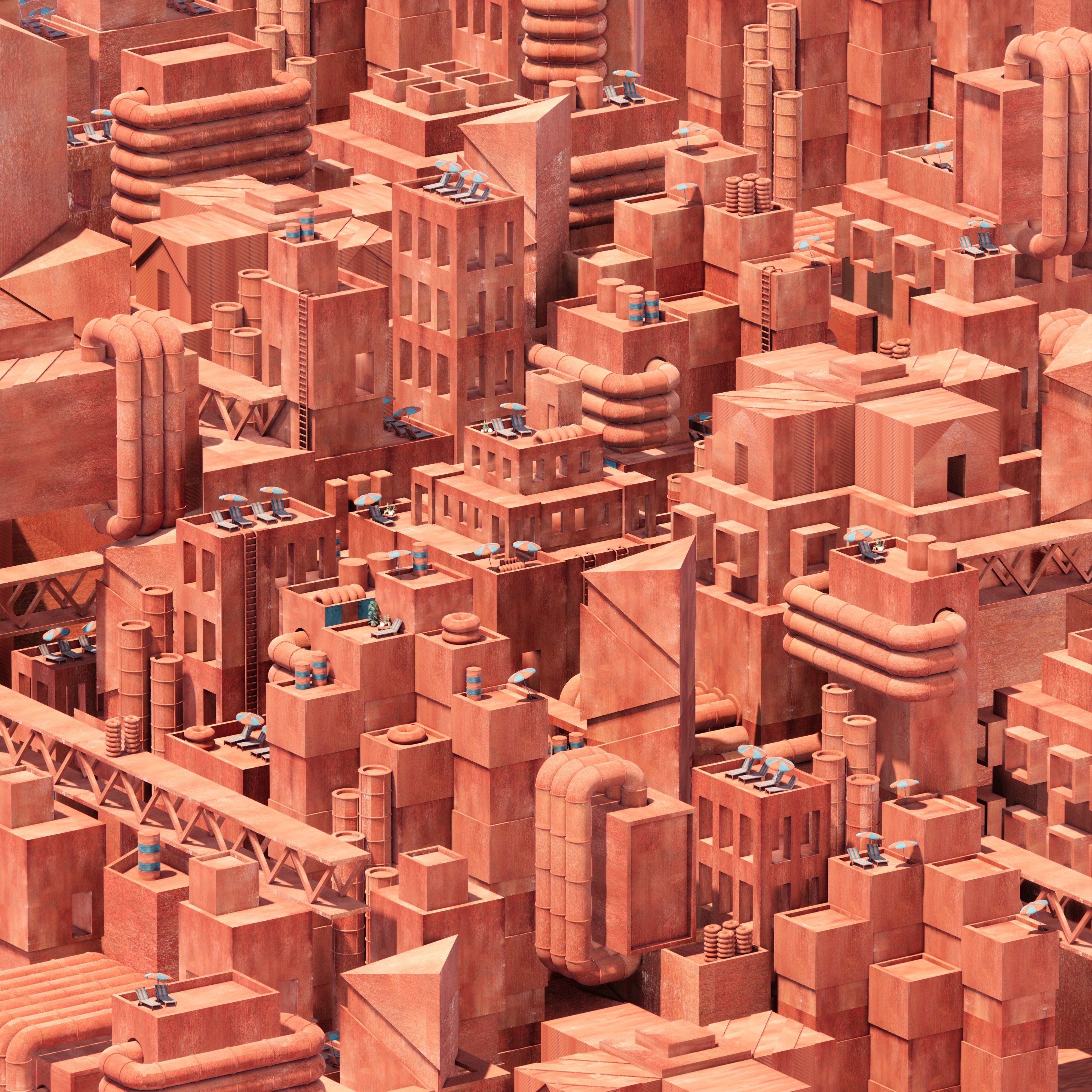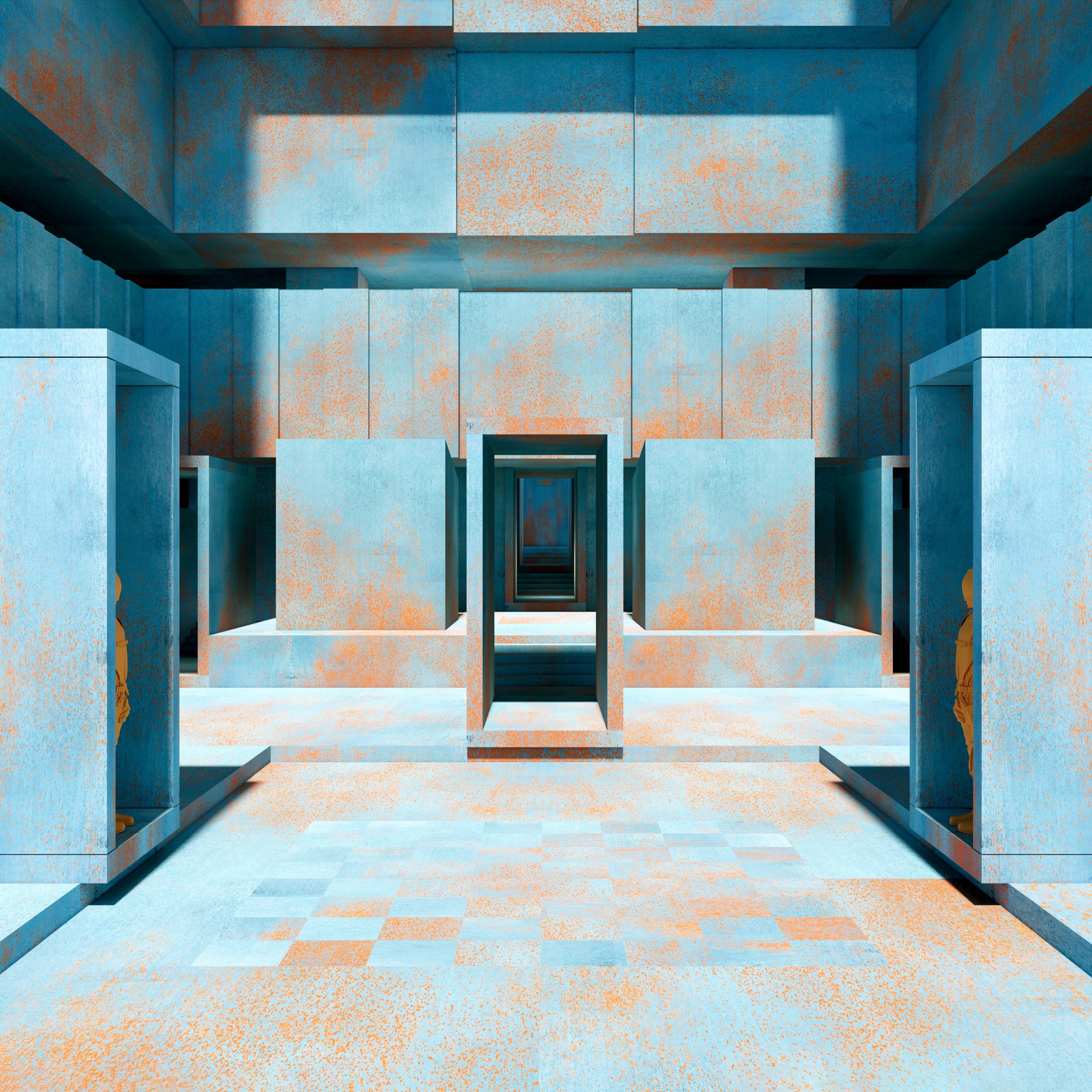We tend to think that architects' main fields of work are generally buildings and interiors, yet New York-based architectural designer and digital artist Ceren Arslan's "out of the sequence" art project "EXIT" beats the system, paving the way for a new space where architecture and the digital world meet.
For this reason, her art project is based on creating a unique space that leads to an exit from the mundane.
Arslan, who earned a solid place in the field of digital art by collaborating with product designers, music companies, the fashion world and corporate brands within the scope of "EXIT," has exhibited her works in many well-established design shows such as Milan Design Week, and was awarded the Architectural Visualization Award by the Archdaily Jury, having the privilege of being one of the eight architects who won the award.
Ceren Arslan received her Bachelor of Architecture from Pratt Institute in 2018 in New York City, graduating with a Top Honorable Mention Degree Project Award. After her graduation, she gained experience in SHoP Architects, recognized for the design of the Barclays Center in Brooklyn and the renovation projects of the Google office in Silicon Valley. Currently, she continues to work as a "concept designer" for Kelly Wearstler, one of the most influential architects in the U.S.
During her education at Pratt Institute, which is a well-established art school in New York that has hosted great artists and architects, she tackled the field of architecture in an interdisciplinary manner, taking courses ranging from metaphysics, environmental ethics and digital fabrication from liberal arts and design campuses, as well as covering niche topics such as architectural pedagogy.
The project is a creative agency that spans from production to art direction to commercial campaigns. The brand revolves around concept architecture, spatial design and storytelling represented as a collection of digital art via renderings at its early stage. From digital environments to physical production, the brand maintains a consistent mood around escapism and aims to create extraordinary architectural spaces.
As its very name indicates, "EXIT" is an escape to another realm, or as Arslan explains it: "Every exit is an entry to another world." Describing the creation process, Arslan said that "EXIT" appeared as an escape where she could work freely without functional realities, structural requirements or budgetary constraints, without the limits of reality. By designing a space every week and forcing herself to create an original concept each time, she created 20 pieces, shaping extraordinary spaces, whether permanent or temporary, experiential or livable, to break the spell of the mundane.
Thanks to her knowledge of designing software, 3D design has become Arslan's optimal language of expression after graduation. Also, her enthusiasm to be free to style her art led to her creating a series of places that are close to reality yet fictional with a story. Then she gathered them under the name "EXIT" as alternative designs for reality. Each space has a different function in her collection. Instead of highlighting a city or geography, Arslan's main focus is extraordinary designs, evoking a unique emotion in the spectator. Playing with space, the dominance of colors and the unusual attitude of geometry, she creates spaces without borders.
The creation process for the artist commences with a narrative, seeking answers to questions such as, "What am I trying to capture?" or "What do I want to reflect with this image?" These answers for her even precede the technical aspects. When she decides on the messages that she wants to convey, she starts to focus on the tools for her art. Sometimes she goes with a traditional technique of drawing on paper with charcoal, and sometimes with a 3D drawing. Instead of being inspired by the computer-generated graphics, she chooses to be mused by the visual library that she cumulated over the years. Finally, with the environmental adjustments, the unique space is cast in concrete.
For instance, her work entitled "EXIT 032: Where is Waldo?" is an inspiration by the original children’s puzzle as the viewers are challenged to find the Waldo chair designed by Pietro Franceschini. A singular color of rust over a cityscape with brief eye-straining patterns, the scene hides the puffy Waldo chair just like the witty original itself.
French American fashion columnist and editor Diana Vreeland, Dutch architect and architectural theorist Rem Koolhaas and prominent Spanish architect Ricardo Bofill are among her inspiring figures. In addition, she relies on the philosopher Michel Foucault's concept of "heterotopia," which describes "spaces disrupting the ordinary order." Heterotopias are defined as worlds within words, mirroring reality yet upsetting the outside representations.
"We can consider these places as other worlds within the world that disrupt the order of the outside world. This concept has political and social references yet has a powerful side that makes daily routines questionable. In this regard, they have similar perspectives with 'EXIT' under the umbrella of escapism," Arslan explained.
The artist has been focusing on the artificial intelligence (AI) architecture concept as a new way to artificially create architectural visuals.
"Exit" - Google News
September 28, 2022 at 06:47PM
https://ift.tt/H6Gvywt
Ceren Arslan's 'EXIT': Extraordinary spaces break ordinary order | Daily Sabah - Daily Sabah
"Exit" - Google News
https://ift.tt/Xz1H4Jf
https://ift.tt/bGpL1dP
Bagikan Berita Ini


















0 Response to "Ceren Arslan's 'EXIT': Extraordinary spaces break ordinary order | Daily Sabah - Daily Sabah"
Post a Comment